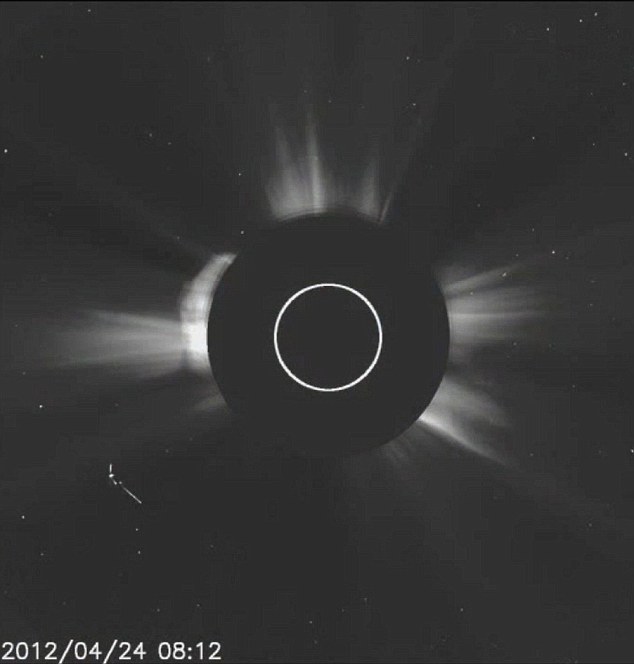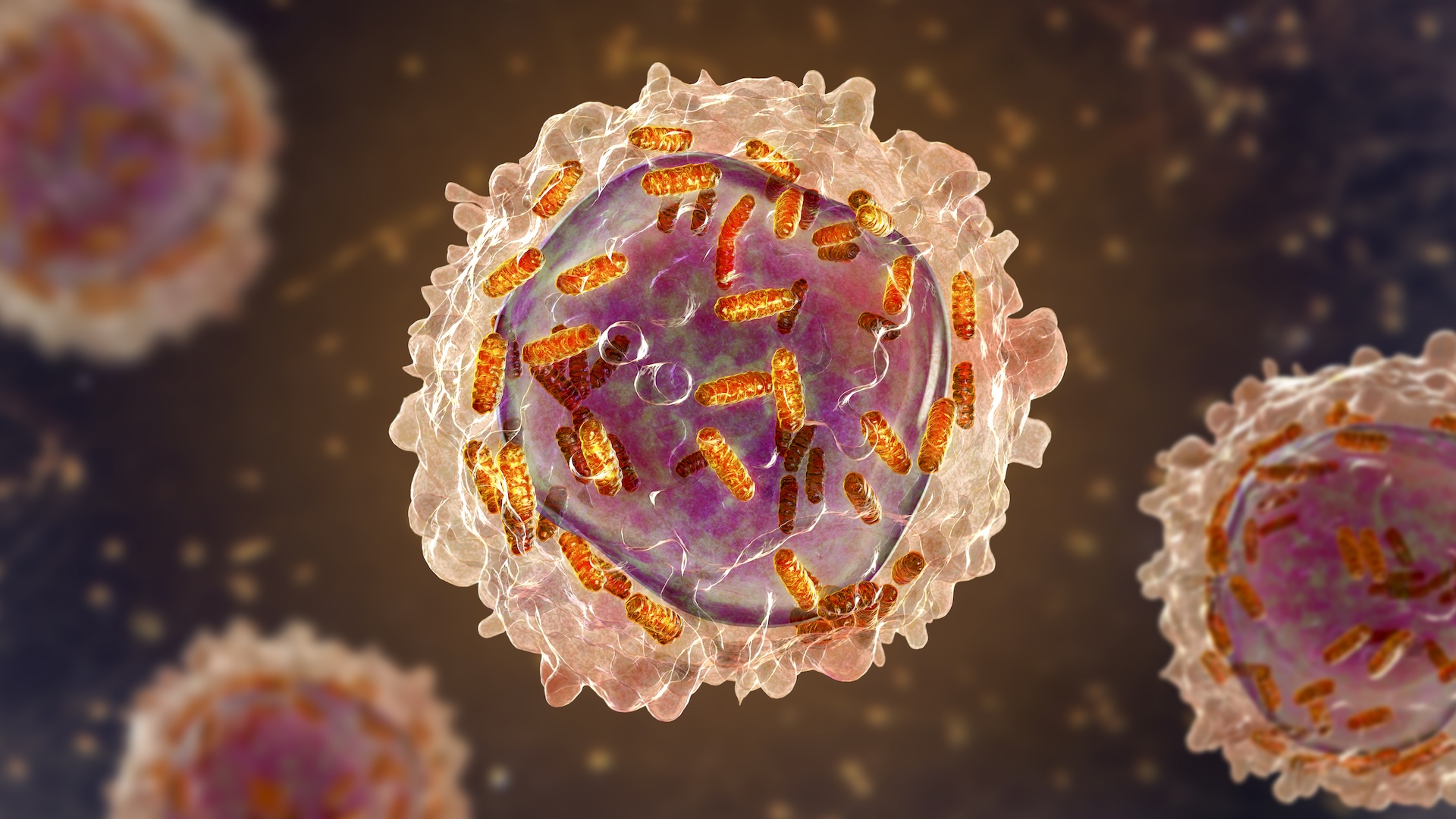UFO Spaceship Orbiting the Sun, or a Camera Glitch?

UFO hunters have spotted a curious object near the sun in a new NASA image. It is, in the words of a blogger for the website Gather, "what looks like a metallic, jointed spaceship with a gigantic extension, perhaps a boom arm, anchored off its lower end." The YouTube video drawing attention to the object has quickly made its way to discussion forums and the tabloid press, and many seasoned UFO believers are calling it a definite "spot."
But does this image, which was taken by a camera on board NASA's Solar and Heliospheric Observatory (SOHO) on Tuesday (April 24), really show a spaceship dropping by the sun to harvest some solar energy, as one YouTube commenter suggested? Or is this object something much more mundane? We asked scientists in the solar physics branch at the United States Naval Research Laboratory (NRL) — the group that analyzes data from Lasco 2, the telescopic camera that snapped the picture.
According to Nathan Rich, lead ground systems engineer in the NRL's solar physics branch, the "spaceship" is merely a collection of streaks left by cosmic rays, charged particles from space, which whizzed through the camera's sensor, or CCD, as the image was taken. [See footage]
"The streaks in question are consistent with energetic particle (proton) impacts on the CCD, something which is apparent in just about every image," Rich told Life's Little Mysteries.
"Notably," he added, "these artifacts do not persist from image to image," — proving they are momentary blips in the camera sensor rather than an actual object in the field of view. Some images taken by the Lasco 2 camera are swarming with artifacts, caused by particles zipping across the CCD in every direction.
As a cosmic ray passes through a camera's image sensor, it deposits a large amount of its electric charge in the pixels that it penetrates. If the particle passes through at a shallow angle to the plane of the camera, it affects several pixels along its path. The result is a bright streak on the image.
In the image in question, a burst of cosmic rays happen to hit the camera lens at just the right angles to create the form of a hinged spaceship. The "boom arm," angled at a slant across the rows and columns of pixels, was formed by a cosmic ray streaking through the camera sensor diagonally and at a shallow angle, depositing charge in several pixels along a diagonal line.
Get the world’s most fascinating discoveries delivered straight to your inbox.
Cameras on Earth are less susceptible to interference by charged particles from space, because the Earth's protective magnetosphere blocks them from hitting the planet's surface, Alfred McEwen, director of the Planetary Imaging Research Laboratory at the University of Arizona, explained last year, when another artifact was mistaken for an alien base on Mars. "But with space images that are taken outside our magnetosphere, such as those taken by orbiting telescopes, it's very common to see these cosmic ray hits," he said.
Follow Natalie Wolchover on Twitter @nattyover. Follow Life's Little Mysteries on Twitter @llmysteries, then join us on Facebook.
Natalie Wolchover was a staff writer for Live Science from 2010 to 2012 and is currently a senior physics writer and editor for Quanta Magazine. She holds a bachelor's degree in physics from Tufts University and has studied physics at the University of California, Berkeley. Along with the staff of Quanta, Wolchover won the 2022 Pulitzer Prize for explanatory writing for her work on the building of the James Webb Space Telescope. Her work has also appeared in the The Best American Science and Nature Writing and The Best Writing on Mathematics, Nature, The New Yorker and Popular Science. She was the 2016 winner of the Evert Clark/Seth Payne Award, an annual prize for young science journalists, as well as the winner of the 2017 Science Communication Award for the American Institute of Physics.



